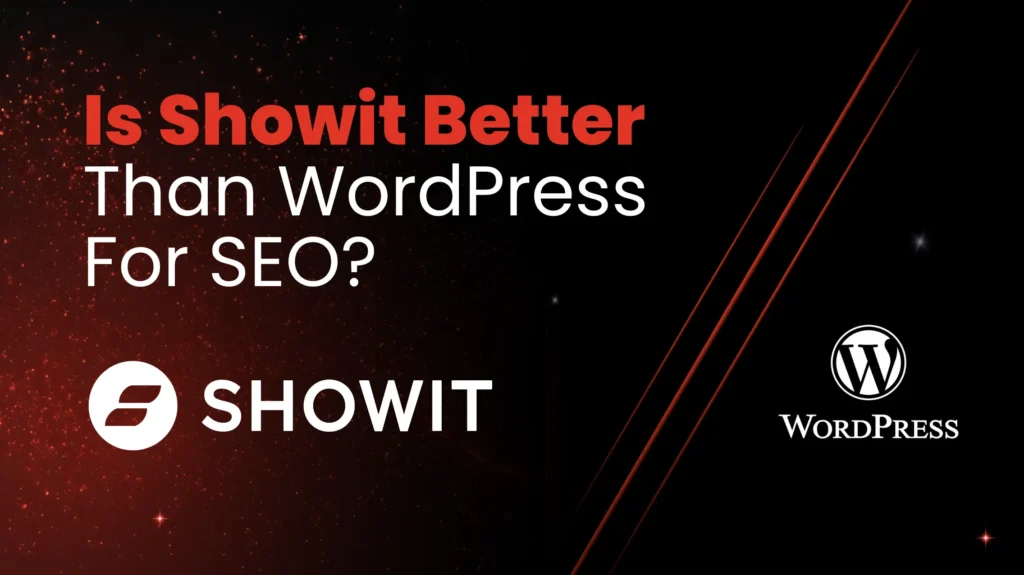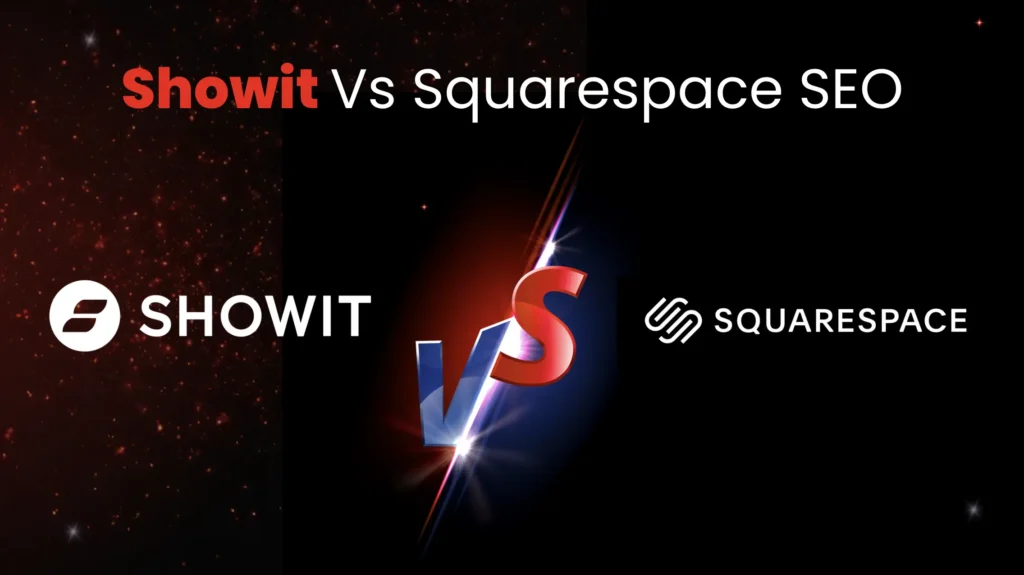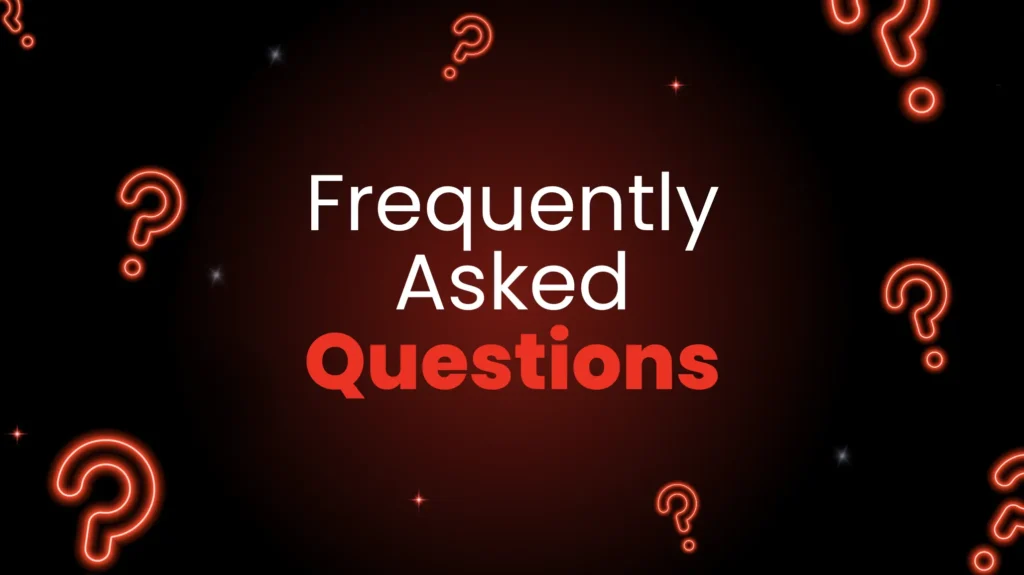Showit SEO

Table of Contents
Diving into the world of Showit SEO, this exploration offers a concise yet informative look at how Showit stands in the realm of search engine optimization compared to other website building platforms. Get ready to uncover the strengths and weaknesses of Showit SEO and see how it stacks up against its competitors, providing valuable insights for anyone looking to optimize their online presence.
What Is A Showit Website?
Showit is a highly customizable, drag-and-drop website builder designed specifically for creatives and entrepreneurs who seek unparalleled control over the design of their online presence. Showit stands out for its user-friendly interface that allows for the creation of unique, visually appealing websites without the need for coding knowledge.
It enables users to craft responsive, mobile-friendly sites that showcase their brand and work in a visually compelling way. With its integration capabilities with WordPress for blogging, Showit offers a powerful solution for those who prioritize design flexibility and want to combine stunning visuals with robust blogging functionality.
What Platform Is Showit On?
Showit is its own standalone web design and hosting platform, distinct from other popular website builders and content management systems. It operates through a web-based application, allowing users to create and manage their websites directly through Showit’s interface. This platform is especially renowned for its creative freedom, offering drag-and-drop functionality that doesn’t require coding skills.
While Showit hosts the main website, it seamlessly integrates with WordPress for blogging purposes, combining Showit’s design flexibility with WordPress’s powerful blogging capabilities. This unique integration allows users to leverage the best of both worlds: Showit’s design-first approach for the website and WordPress’s extensive blogging and SEO features.
Does Showit Host Your Website?
Yes, Showit does host your website. When you create a website using Showit, the platform provides hosting services as part of their subscription plans. This means that your website’s files, images, and content are stored on Showit’s servers.
The hosting service included with Showit is designed to ensure that websites are fast, secure, and reliably accessible to visitors. Additionally, Showit takes care of technical aspects like website security and bandwidth management, allowing users to focus on designing and managing their website without worrying about the technicalities of web hosting.
Can You Use Showit For Free?
Showit does not offer a completely free plan for building and hosting websites. However, they provide a free trial period that allows users to explore the platform’s feature panel and capabilities before committing to a paid subscription.
During the trial, users can design their website, experiment with the drag-and-drop builder, and get a feel for how Showit works. This trial period is an excellent opportunity for potential users to assess whether Showit meets their needs and preferences for web design and functionality. After the trial ends, continuing to use Showit and publish a website requires choosing one of their subscription plans.
Showit SEO

Showit SEO refers to the search engine optimization capabilities and tools offered within the Showit web design platform. SEO is a critical aspect of any website, as it determines how well a site ranks on search engine results pages (SERPs), affecting its visibility and ability to attract organic traffic. Showit recognizes the importance of SEO for its clients and provides various features to help optimize websites for search engines.
SEO Settings
-
- Mobile Responsiveness: Showit designs are inherently mobile-friendly, a crucial factor for SEO as search engines like Google prioritize mobile-optimized sites in their rankings.
-
- Integration with WordPress for Blogging: Showit seamlessly integrates with WordPress for blog content management, leveraging WordPress’s robust SEO capabilities, including plugins like Yoast SEO, to enhance content optimization and visibility.
-
- Customizable URLs: Users have the ability to customize their page URLs, making them more SEO-friendly by including relevant keywords and ensuring they are easily readable by both users and search engines.
-
- SSL Certificates: Showit provides SSL certificates for all hosted websites, ensuring secure connections—a factor that search engines consider positively in ranking websites.
-
- Sitemap and Robots.txt File Management: Showit automatically generates sitemap.xml and robots.txt files, helping search engines more efficiently crawl and index the website’s content.
Showit On Page Search Engine Optimization
Showit on-page search engine optimization (SEO) encompasses a range of elements crucial for improving a website’s visibility and ranking in search engine results. These components work together to make the site not only more attractive to search engines but also more accessible and engaging for users. Here’s a general overview of key on-page SEO factors within Showit:
Keywords
Keywords serve as the foundation of SEO, guiding search engines to understand the relevance of a website’s content to specific search queries. They help categorize and rank web pages, making keyword optimization a vital aspect of content creation and website structuring.
Page Titles
Page titles are critical for SEO and user experience. They provide a concise description of the webpage’s content and are displayed in search engine results, influencing click-through rates. Optimized titles help search engines and users quickly grasp the page’s focus.
Meta Descriptions
Meta descriptions provide a concise overview of a webpage’s content, displayed beneath the title in search engine results. Although they don’t influence rankings directly, well-crafted meta descriptions can enhance click-through rates, offering searchers a snapshot of what the page contains and enticing them to visit.
Images
Images enhance the user experience and can contribute to SEO when properly optimized. Key aspects include:
-
- Image File Names: Descriptive file names help search engines understand the image content and its relevance to the page.
-
- Image Alt Text: Alt text improves accessibility for users who can’t see images and provides contextual information to search engines, potentially boosting the page’s relevance for related searches.
-
- Image Description and Caption: These offer additional context and information about the image, enriching the user experience and providing more content for search engines to index.
-
- Image Size: Optimized image sizes ensure faster page loading times, a factor that search engines consider for ranking.
Blog Content + Website Copy
The quality and optimization of website copy and blog content are paramount. Engaging, well-written content that incorporates keywords naturally can significantly improve a site’s search engine rankings. High-quality content also encourages user engagement, sharing, and return visits.
Create A Winning SEO Content Strategy
Creating a winning SEO content strategy is vital for boosting your website’s visibility and attracting organic traffic. Here’s a streamlined approach to building an effective SEO content strategy:
-
- Define Your Goals and Audience
Determine your objectives and get to know your target audience’s preferences and challenges to guide your content creation.
-
- Keyword Research
Utilize tools like Google Keyword Planner to identify relevant keywords, focusing on those that match your audience’s search intent.
-
- Competitor Analysis
Analyze content from competitors ranking for your target keywords to find opportunities for improvement or differentiation.
-
- Content Planning
Choose the types of content you will create and use a content calendar to maintain a consistent publishing schedule.
-
- Content Creation
Produce high-quality, engaging content that incorporates keywords naturally and answers your audience’s questions.
-
- Content Promotion
Leverage social media, email marketing, and outreach to enhance your content’s reach and build backlinks.
-
- Performance Analysis and Optimization
Monitor your content’s performance with tools like Google Analytics and continually optimize based on the insights gathered.
-
- Continual Learning and Adaptation
Stay updated on SEO trends and be open to adapting your strategy based on new insights and feedback.
By following these steps and focusing on producing valuable content for your audience, you can develop a successful SEO content strategy that drives traffic and establishes your authority in your niche.
Showit Off Page Search Engine Optimization
While Showit allows for comprehensive on-page SEO adjustments, extending your strategy to include off-page SEO is essential for a well-rounded approach. Off-page SEO involves techniques implemented outside of your Showit website to improve its authority and search engine rankings. Here are key strategies to consider:
-
- Backlink Building
-
- Quality Over Quantity: Focus on acquiring high-quality backlinks from reputable websites in your industry. This can significantly boost your site’s authority.
-
- Guest Blogging: Write valuable content for other blogs or websites in exchange for a backlink to your Showit site.
-
- Directory Submissions: Submit your website to reputable directories and local business listings relevant to your niche.
-
- Social Media Engagement
-
- Share Your Content: Use social media platforms to share your website’s content, encouraging shares, likes, and comments. While social signals are not a direct ranking factor, they can increase visibility and drive traffic.
-
- Build Relationships: Engage with influencers, other brands, and communities within your niche on social media to build relationships and earn mentions.
-
- Content Marketing
-
- Create Shareable Content: Produce high-quality, valuable content that others want to link to and share. Infographics, research studies, and comprehensive guides are examples of content that can attract backlinks and social shares.
-
- Promote Your Content: Actively promote your content through email newsletters, social media, and industry forums to increase its reach and potential for backlinks.
-
- Online Reviews and Mentions
-
- Encourage Reviews: Ask satisfied customers to leave positive reviews on platforms like Google My Business, Yelp, and industry-specific review sites.
-
- Monitor Brand Mentions: Use tools to monitor mentions of your brand online. Reach out to sites that mention your brand but don’t link to your website to request a backlink.
-
- Forums and Community Engagement
-
- Participate in Industry Forums: Engage in discussions on forums and online communities relevant to your niche. Offer valuable insights and include a link to your website in your forum signature or profile where appropriate.
-
- Answer Questions: Platforms like Quora and Reddit can be valuable for establishing authority. Answer questions related to your industry and, when relevant, link back to your website for more information.
How Do I Increase My SEO On Showit?

To increase your SEO on Showit, start by focusing on the foundational elements of on-page optimization. This includes integrating relevant keywords into your page titles, meta descriptions, and throughout the body of your content. Make sure all images are optimized with descriptive file names and alt tags to enhance their discoverability by search engines.
Leverage Showit’s mobile-friendly design capabilities to ensure your site performs well across devices, as mobile responsiveness is a significant factor in search rankings. Additionally, utilize Showit’s integration with WordPress for blogging, as creating regular, high-quality blog content can significantly improve your site’s SEO performance by targeting additional keywords and engaging your audience.
How Do I Optimize SEO On Showit?
Optimizing SEO on Showit involves a strategic approach to enhance your website’s visibility and search engine rankings. Here are key steps to follow:
-
- Utilize SEO-Friendly Page Titles and Meta Descriptions
Craft unique and descriptive titles and meta descriptions for each page, incorporating relevant keywords to improve your site’s relevance in search results.
-
- Optimize Your Images
Use descriptive file names and fill out the alt text for every image on your site, helping search engines understand and index your visual content more effectively.
-
- Ensure Mobile Responsiveness
Showit’s design capabilities inherently offer mobile responsiveness. Ensure your design looks and functions well on various devices to meet search engines’ mobile-first indexing.
-
- Implement Structured Data
Although more advanced, adding structured data (schema markup) to your Showit site can help search engines better understand your content and enhance the appearance of your pages in SERPs.
-
- Leverage Blogging with WordPress Integration
Take advantage of Showit’s seamless integration with WordPress for blogging. Regularly publish high-quality, keyword-rich blog posts to engage your audience and provide fresh content for search engines to index.
-
- Improve Site Speed
Use Showit’s design features wisely to maintain fast loading times. Avoid overloading pages with high-resolution images without optimizing them for web use.
-
- Use Internal Linking
Create a web of links within your site by linking to other relevant pages and posts. This helps distribute page authority throughout your site and keeps visitors engaged longer.
-
- Monitor and Analyze Your SEO Performance
Use tools like Google Analytics and Google Search Console to track your website’s performance, understand how visitors are finding your site, and identify areas for improvement.
Is Showit Better Than WordPress For SEO?

WordPress is the most popular content management system on the internet and it has comprehensive plugins (AIOSEO, Rank Math) for optimizing every aspect of a site’s SEO, from meta tags, alt text, and readability checks. WordPress allows for deep customization of SEO settings, making it a preferred choice for those whose primary focus is on maximizing their search engine optimization efforts.
Showit, on the other hand, offers a more design-centric platform, prioritizing ease of use and visual customization. While Showit does provide basic SEO tools for optimizing page titles, meta descriptions, and image alt texts, and benefits from mobile responsiveness, it might lack the depth of SEO customization and automation that WordPress offers through its plugins. However, Showit’s integration with WordPress for blogging leverages WordPress’s SEO strengths, allowing users to create visually stunning websites with Showit while still benefiting from WordPress’s powerful blogging and SEO features.
In summary, if your main concern is SEO and content management, WordPress might be the better choice due to its advanced SEO tools and flexibility. However, if you’re looking for exceptional design capabilities with decent SEO options and are willing to integrate with WordPress for blogging, Showit could be a more suitable option. The best choice depends on your specific needs, skills, and priorities.
How Does Showit Work With WordPress For SEO?
Showit works with WordPress by offering a unique integration that combines Showit’s powerful design capabilities with WordPress’s robust content management and SEO features. This integration is particularly beneficial for SEO for several reasons:
-
- Blogging with WordPress
Showit users can manage their blog using WordPress’s backend, benefiting from WordPress’s superior blogging capabilities. This allows for the use of WordPress’s extensive SEO plugins, like Yoast SEO, to optimize blog posts for search engines, including customizable meta titles, descriptions, and keyword analysis.
-
- Customizable Design and Content
While Showit handles the website’s design, allowing for visually appealing, custom layouts that are responsive and user-friendly, WordPress manages the blog content. This separation ensures that the site remains attractive and engaging to users, which is a positive signal to search engines, while also ensuring the content is well-organized and SEO-friendly.
-
- Enhanced User Experience
Showit’s drag-and-drop builder enables the creation of unique, mobile-responsive designs that offer a great user experience across devices. Since user experience is a ranking factor for search engines, integrating WordPress for content management ensures that both design and content contribute positively to SEO.
-
- SEO Plugins and Tools
By utilizing WordPress for blogging, you can take advantage of the wide range of SEO tools and plugins available for WordPress. These tools offer functionalities for keyword optimization, creating XML sitemaps, improving site speed, and generating rich snippets, which can enhance your site’s visibility and rankings.
-
- Content Strategy Execution
WordPress’s content management system (CMS) makes it easier to implement a consistent content strategy with scheduled posts, categories, and tags for better site structure and navigation, which is beneficial for SEO.
The Showit and WordPress integration essentially allows users to enjoy the best of both worlds: Showit’s unparalleled design flexibility and user experience, combined with WordPress’s content management excellence and SEO prowess. This synergy enables the creation of websites that are not only visually stunning and unique but also optimized for search engines, thereby improving online visibility and traffic.
Showit Vs Squarespace SEO

Comparing Showit and Squarespace in terms of SEO capabilities involves examining how each platform supports the optimization of websites for better visibility and rankings on search engines. Both platforms cater to users seeking design flexibility without requiring extensive coding knowledge, but they differ in their SEO offerings.
Showit SEO
-
- Design Flexibility: Showit excels in design customization, allowing for unique, visually compelling websites that can positively impact user engagement and time on site, indirect factors that can influence SEO. This eliminates the need of a designer.
-
- WordPress Integration: For blogging, Showit integrates with WordPress, providing users with the best of WordPress’s robust SEO capabilities, including access to powerful SEO plugins and tools for content optimization.
-
- Basic SEO Features: Showit supports basic on-page SEO optimizations, such as custom page SEO titles, meta descriptions, and alt text for images, which are essential for improving search rankings.
-
- Mobile Responsiveness: Showit designs are inherently mobile-responsive, a critical factor for SEO, especially following Google’s mobile-first indexing.
Squarespace SEO
-
- Built-in SEO Tools: Squarespace offers a range of integrated SEO features out of the box, including automatic sitemaps, clean HTML markup for better indexing, and built-in mobile responsiveness.
-
- User-friendly SEO Settings: Squarespace provides an intuitive interface for managing SEO settings, including page titles, meta descriptions, and alt tags, making it accessible for users without technical expertise.
-
- Blogging and Content Management: Squarespace’s all-in-one platform includes solid blogging and content management capabilities, with features that support SEO, such as customizable URLs, categories, and tags.
-
- SSL Certificates: Squarespace automatically provides SSL certificates for all websites, improving site security and potentially boosting SEO rankings.
Comparison
-
- SEO Plugins and Advanced Tools: Showit, through its WordPress integration, allows for the use of extensive SEO plugins and advanced tools that are not natively available on Squarespace. This can offer a deeper level of SEO customization and optimization for users comfortable with WordPress.
-
- Ease of Use: Squarespace may be more straightforward for users looking for an all-in-one solution with less complexity. Its built-in SEO tools are designed to be user-friendly and covers the basic needs for effective SEO.
-
- Customization vs. Convenience: Showit offers greater design customization, which, when combined with WordPress’s SEO capabilities, can be powerful for SEO-savvy users. Squarespace provides a more streamlined approach, balancing good design with built-in SEO functionalities for those seeking simplicity and ease of use.
Ultimately, the choice between Showit and Squarespace for SEO depends on the user’s specific needs, technical comfort level, and priorities in website design versus integrated SEO capabilities. Both platforms can support effective SEO strategies, but they help create different user profiles and preference versions.
Learn More About SEO
Eager to enhance your understanding of SEO and boost your digital marketing prowess? Head over to our digital marketing resource page and delve into our SEO blog, where you’ll find an abundance of knowledge, advice, and tactics. Our content is crafted to assist everyone, from novices seeking foundational knowledge to experienced marketers looking to polish their skills.
Navigate the intricacies of SEO with our expertly designed resources and unleash the maximum potential of your web presence. Begin your journey today and elevate your digital marketing strategies to unparalleled levels!
Showit SEO: Frequently Asked Questions

Is Showit good for SEO?
Showit can be considered good for SEO, especially for users who prioritize design flexibility alongside foundational SEO practices. The platform supports essential on-page SEO optimizations such as custom page titles, meta descriptions, and alt text for images, which are crucial for improving a website’s visibility in search engine results.
Showit’s designs are also mobile-responsive, a key factor given the emphasis search engines place on mobile usability. Additionally, the integration with WordPress for blogging harnesses WordPress’s robust SEO capabilities, offering a solid foundation for content-based SEO strategies. However, users looking for advanced SEO features directly within the platform may find limitations compared to other CMS platforms specifically designed with SEO in mind.
Is Showit good for blogging?
For blogging, Showit offers a unique advantage by integrating seamlessly with WordPress, one of the most powerful blogging and content management systems available. This integration allows Showit users to enjoy the best of both worlds: the ability to design visually stunning websites with Showit templates and manage blog content through WordPress. Users benefit from WordPress’s extensive features, including SEO tools, plugins, and a vast library of themes tailored for blogging. This makes Showit a good choice for bloggers who also prioritize website design and want to leverage WordPress’s comprehensive blogging capabilities without compromising on the aesthetic appeal of their site.
Related Posts

